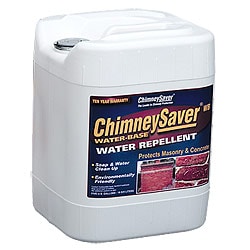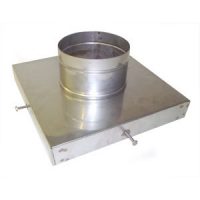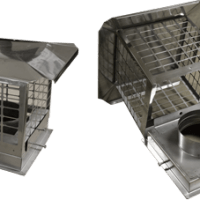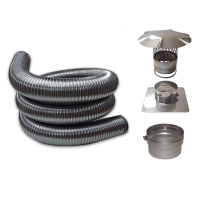What Exactly Are You Applying to Your Chimney?
by: Clay Lamb
Chimneys project high above the roofline. With no other structures around them to shield them, they are extremely vulnerable to water and other storm damage. At high altitudes, damage sustained to brick from vapors inside the brick freezing and thawing is actually amplified. The Brick Industry of America notes that chimneys are special structures requiring special attention and maintenance. ChimneySaver Water Repellent products are specially formulated to protect these structures.
This ChimneySaver water repellent has been used by professionals in the chimney business for almost twenty years due to its special formula. The aspect that sets apart this water repellent from the rest is the fact that it is a vapor permeable formula. It will not trap water vapors that are always present in the brick, like other sealants. If the water vapors are trapped inside the brick, as they expand and contract due to freezing and thawing, the face of the brick is likely to pop off or cracks will occur. This solvent based formula is indeed vapor permeable but still provides unmatched protection against water damage for your brick. According to ASTM tests run at the University of Wyoming, it reduces water penetration into the brick by 99.9%.
ChimneySaver Water Base Water Repellent is another version of ChimneySaver water repellent. This water repellent is water based, meaning that it has been specially formulated for use on brick that has never been treated before. Since this formula’s base is water, it is less effective on surfaces that have been treated by other water repellents in the past and works at its maximum efficiency on surfaces never before treated. If the surface you are working with has ever been treated before with another sealer or water repellent, the Solvent Base Water Repellent is the best choice for you. This sealant will effectively penetrate brick that has been treated with water repellents in the fast due to its mineral spirit base, but it will work just as effectively as brick that has never been treated before at all. Either one of ChimneySaver’s Water Repellents are each formed specifically to prevent the deterioration of your brick on the chimney, meaning it is the most durable formulaon the market.
This product will cover between 90 and 150 square feet. ft. per gallon. It is available in 3, 5, 30, and 55 gallon containers giving you flexibility that matches the size of your project. You must apply ChimneySaver Solvent Base Water Repellent in temperatures above 40 degrees Fahrenheit, and allow at least two hours of drying time. There must be a six hour window of time between application and any rainfall. The recommended application is with a pump sprayer, and cleanup is easy requiring only soap and water.







